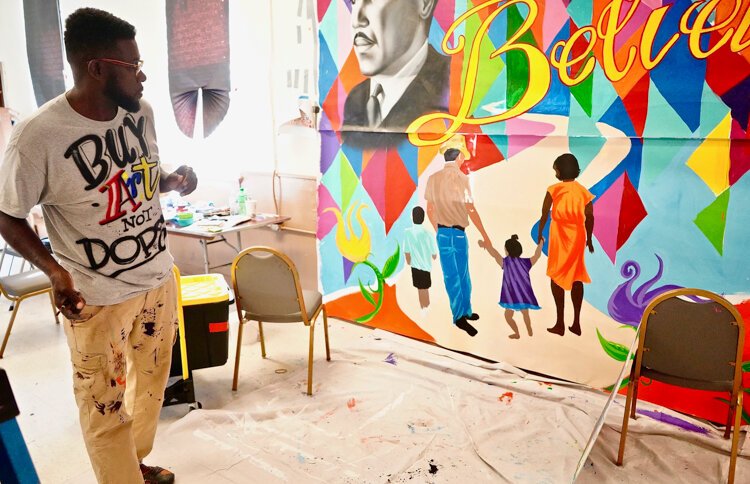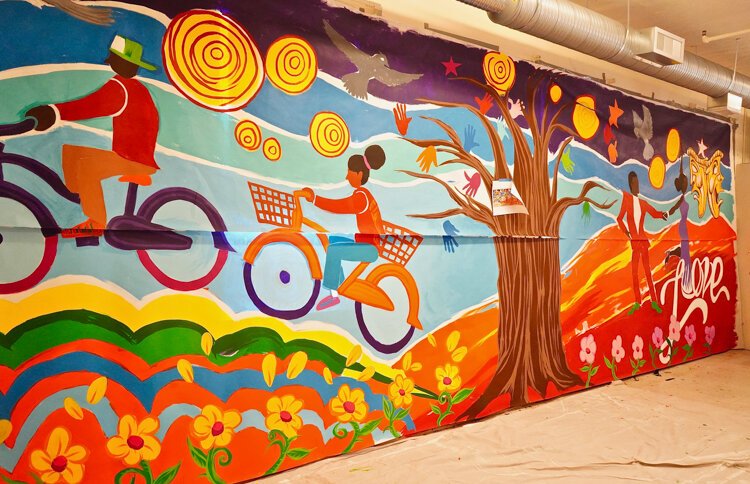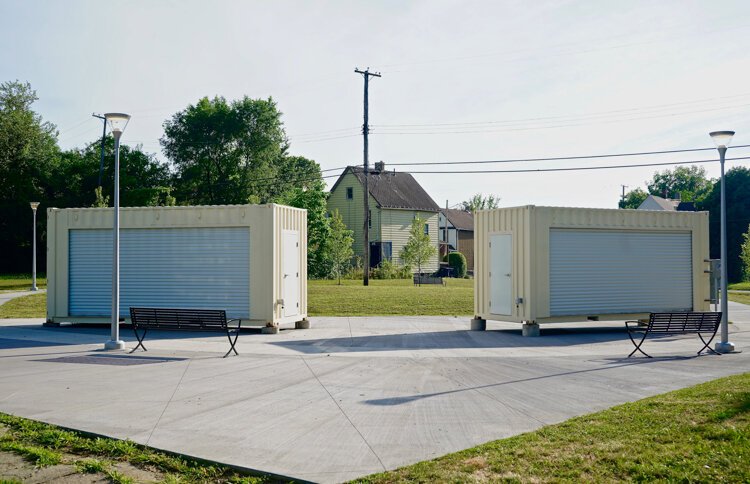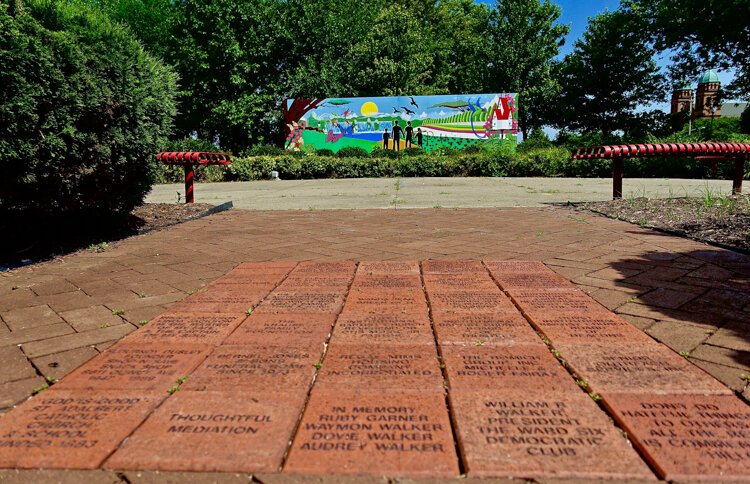Building community through art: An expression of Fairfax’s vitality
One of Cleveland’s most culturally relevant neighborhoods is experiencing a resurgence of art through efforts to revitalize the community.
Fairfax has made a significant impact on art and culture both locally and nationally. From Karamu House—America’s oldest black theatrical institution—to the recent addition of green spaces with an artistic flair, the community is gathering around a central idea: Art is important.
It always has been in Fairfax. Fairfax is where Harlem Renaissance poet Langston Hughes first made his mark in literary circles that resonated across the country. Noted painter Charles Sallee launched a career in visual art from the platform of Karamu House, noted for both theatrical and visual excellence. A plethora of actors including Wilbert Francisco “Bill” Cobbs, Ron O’Neal, Ruby Dee and Vanessa Bell Calloway also got their start at Karamu House.
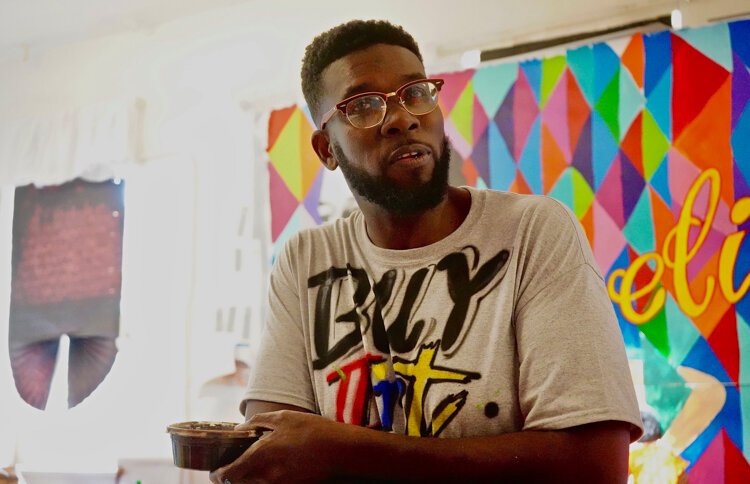 Augustus TurnerPlaywright Park brings art and greenery
Augustus TurnerPlaywright Park brings art and greenery
In the midst of a new housing development called Innovation Square, Fairfax Renaissance Development Corp. is carving out space for public art. A turnkey part of that development is a centralized green space called Playwright Park, meant to pay homage to Karamu House.
Playwright Park, which sits between East 101st and East 103rd streets near Quebec Avenue, is nearly ready to unveil.
The space was funded by the Ohio Department of Natural Resources, Cuyahoga County, and PNC Bank and received in-kind donations from the Cleveland Clinic—which provided trees as a part of the Cleveland Tree Coalition—and Great Lakes Construction.
The finishing touches of landscaping are in progress, but the ultimate addition will be murals painted by Cleveland artist Augustus Turner with help from another local artist, John “Sky” Davison, and local residents who attended a community meeting July 16.
The Playwright Park project represents the intersection of planning by both Fairfax Renaissance Development Corp. and Karamu House. Two shipping containers in the park will be transformed into stages for productions Karamu will facilitate. The crates’ doors will be covered by the murals, painted on parachute cloth.
Turner says the input he received from community stakeholders altered his vision of the project. Some residents submitted drawings and sketches, while others verbalized their preferences in public meetings. Younger residents wanted to see activity-oriented images, while elders expressed a desire to see nostalgic images. What they worked out brings both elements into the composition, featuring Langston Hughes, an Adinkra symbol for the Universe, and butterflies morphing into books, among other images.
“My biggest thing was the kids, man. We need to give them images that [they] connect with and relate to,” Turner says.
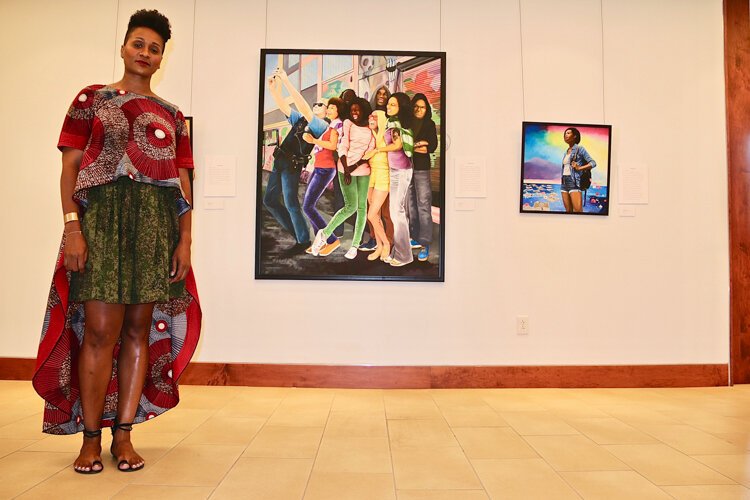 Aseelah ShareefYouth connect to art at Karamu
Aseelah ShareefYouth connect to art at Karamu
Aseelah Shareef, director of operations and community engagement for Karamu House, echoes Turner’s concerns about youth and their connection with art: “I think it [art] is important because I don't think you have a full life without art. … Some of our youth are missing that artistic part that connects them to the world and to who they are as a human.”
Karamu has been holding a space for artistic exploration and is continuing to honor that legacy now. “Arts immersion, study, engagement, whatever touchpoint you can get with the arts. … It makes us recognize something within ourselves,” Shareef says.
The institution is enjoying its own renaissance with an infusion of funding and philanthropy that has led to the transformation of the Jelliffe Theatre and its newly renovated lobby, gallery, and concessions area. Since a grand unveiling last summer, attendance and support of the arts at Karamu have blossomed.
Shareef credits Karamu CEO and President Tony Sias with playing a huge role in its success; updating the vision and the mission statement was key. Speaking of Sias and his team, Shareef says, “He just had a pretty good eye for what needs to happen. There needed to be investment. There needed to be capital investments. There needed to be investment in sustaining the institution for the next hundred years.”
Shareef sees the legacy of providing a space for art by Karamu as an important vehicle for artists of color. Undoubtedly, Playwright Park represents another opportunity to do just that, in addition to all of the other programming it provides with arts education and theatrical production.
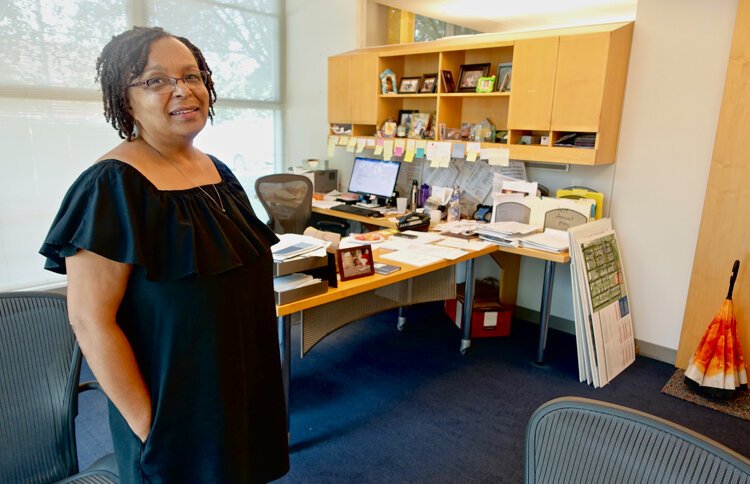 Denise VanLeerContinuing an artistic legacy
Denise VanLeerContinuing an artistic legacy
Art has been a major part of the neighborhood, says Denise VanLeer, executive director of Fairfax Renaissance Development Corp. From Liberty Hill Baptist Church with its performing arts theater and others with their deep connections to music to Karamu and its storied cultural past, art has been an intrinsic aspect of life in Fairfax.
“We have some green spaces that people in the neighborhood, especially teenagers, helped to put together where they paint the fences,” says VanLeer. “Some kids from the Juvenile Justice Center helped us [with] Quincy Park. … We have the Langston Hughes Reading Garden on [East] 86th Street. There’s public art over there as well, on the fence.”
In Quincy Park, a wall by artist Angelica Pozo used tiles that depict the community’s rich history through photographs from 1879 to 2006. It was done, according to VanLeer, through a partnership with Cleveland Public Art, the Western Reserve Historical Society, and Land Studio.
From its roots as a three-person operation in a duplex on Cedar Avenue in 1992 to its current iteration of glass, steel, and masonry on Quincy, perhaps the Fairfax Renaissance Development Corp. is a metaphor for the community it seeks to revive with resuscitation assistance from the arts. Art’s importance in reflecting the lives and culture of those who live in Fairfax cannot be overstated.
The agency aims to breathe new life with opportunities for people to live and work nearby. Creating space for art in building and rebuilding the community is a positive step in the right direction.
“Art is very powerful and liberating for a community. Most communities take ownership of art. They take pride in seeing art that represents them,” says Turner.
This article is part of our On the Ground - Fairfax community reporting project in partnership with Fairfax Renaissance Development Corporation, Cleveland Clinic, PNC Bank, Greater Cleveland Partnership, Cleveland Neighborhood Progress, and Cleveland Development Advisors. Read the rest of our coverage here.

